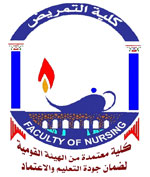The aim of the study is to identify the risk factors of protein energy malnutrition among children under
five years of age in Assiut university children hospital. A correlation descriptive research design was chosen for this
study. A convenient sampling design was followed to include children suffering from protein energy malnutrition
aged below 5 years. Control group was purposively selected to be nearly age and sex matched. A total of 150 study
and 150 control were included. The results revealed that PEM was more found in children in families of middle and
low socioeconomic status with statistically significant differences, history of malnutrition in other sibling and
younger age than others, statistically significant differences between practices of mothers in the cases than the
control groups were found regarding breast feeding, artificial feeding and additional and adult food with low level of
satisfactory practices observed among mothers in the cases than those in the control groups. From this study it can
be concluded that several risk factors were found to be associated with PEM including, lower education level of the
mother, number of children in the family as the number of children in the family decreased , the prevalence of PEM
increased, low and middle family socioeconomic status, age of the child, children with the younger age are more
vulnerable to have PEM than those of older age and mothers' practices regarding feeding of their children (breast
feeding, artificial feeding as well as additional and adult food) unsatisfactory practices of mothers regarding feeding
of their children increase the prevalence of PEM among their children. This study recommended that Supporting and
promotion of breast feeding, avoid using of artificial feeding and bottles, health education to the mothers about
proper feeding practices, breast feeding, artificial feeding and additional and adult food to prevent PEM, increasing
mother's awareness related to risk factors of PEM and how to manage the different infections among their children
and encourage vaccination at the appropriate time.
قسم البحث
مجلة البحث
Journal of American Science
المشارك في البحث
الناشر
NULL
تصنيف البحث
1
عدد البحث
7-4
موقع البحث
NULL
سنة البحث
2011
صفحات البحث
592-595
ملخص البحث

